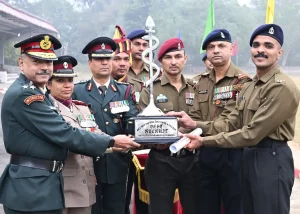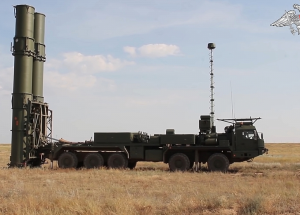Indian river system is not only an essential part of the nation’s geography but also a significant topic in the syllabus for NDA (National Defence Academy) and CDS (Combined Defence Services) exams. These exams test a candidate’s understanding of the country’s geographical and environmental features. Aspiring officers must understand the Indian river system as it impacts everything from the country’s agriculture and economy to its defense strategies. Here’s why a thorough understanding of the Indian river system is crucial for NDA and CDS aspirants:
1. Geographical Significance
India’s rivers are the lifelines of its geography. There are two main types of rivers in India: the Himalayan Rivers and the Peninsular Rivers.
- Himalayan Rivers such as the Ganga, Yamuna, and Brahmaputra originate from the glaciers and are perennial, meaning they have water throughout the year. They shape the northern plains, which are crucial for agriculture.
- Peninsular Rivers like the Godavari, Krishna, and Cauvery depend on monsoons and are seasonal in nature. They influence the geography of the Deccan plateau and southern India.
For an NDA or CDS aspirant, knowing these rivers, their tributaries, and the areas they impact is fundamental. Such knowledge helps in understanding the physical terrain of the country, which is important not only for geographical awareness but also for strategic military planning.
2. Economic Importance
Rivers in India are the backbone of the economy. They support a variety of activities:
- Agriculture: The river basins of the Ganga, Brahmaputra, and others are fertile and support the majority of India’s agriculture. India’s Green Revolution succeeded due to the ample availability of water in river-fed regions.
- Irrigation Systems: Rivers are crucial for irrigation in India. Understanding how river systems feed canals, dams, and reservoirs is important for aspirants, especially when questions in the exam focus on how water resources are managed.
- Hydropower Generation: India’s rivers are vital sources of hydropower, an essential element of the nation’s energy policy. The strategic use of river water for generating electricity also aids industrial growth.
3. Strategic and Defense Importance
Rivers play a pivotal role in defense strategies, particularly in times of war or conflict.
- Natural Borders: Many rivers serve as natural boundaries between India and neighboring countries. For instance, the Brahmaputra River is an important feature along the India-China border in Arunachal Pradesh.
- Terrain for Military Operations: Rivers also form barriers that must be considered during military operations. Understanding the topography of river systems helps in planning logistics, supply chains, and troop movements. Historical conflicts, such as those along the Indus and Brahmaputra, have involved significant riverine strategies.
4. Environmental and Ecological Importance
Indian rivers are home to diverse ecosystems. For an officer, environmental awareness is key in modern military roles, especially those involving disaster management and humanitarian aid.
- Floods and Droughts: Many parts of India suffer from river-induced floods (e.g., in Bihar due to the Kosi River) and droughts due to poor water management in others. Understanding how river systems can cause natural disasters allows officers to contribute to national disaster response mechanisms.
- Pollution and Conservation: Rivers like the Ganga face heavy pollution, affecting water quality and aquatic life. Future defense officers should be aware of environmental issues affecting national security, such as water scarcity or disputes over water sharing between states and countries.
5. Cultural and Historical Importance
India’s rivers are deeply embedded in its history and culture. The Indus Valley Civilization, one of the world’s oldest, developed along the banks of the Indus River. Rivers like the Ganga are considered sacred in Indian culture and have inspired countless cultural practices, traditions, and historical events.
For NDA and CDS aspirants, questions related to rivers may appear in the form of India’s ancient civilizations, historical events, or geographical features. A strong grasp of this information will improve performance in both General Knowledge and History sections of the exam.
6. Current Affairs and Water Disputes
In recent years, water disputes between states like Karnataka and Tamil Nadu over the Cauvery River or between India and Pakistan over the Indus Water Treaty have become important current affairs topics. Aspirants are expected to stay updated on such issues, as questions regarding international treaties or inter-state water disputes often find their way into the NDA and CDS exams.



















